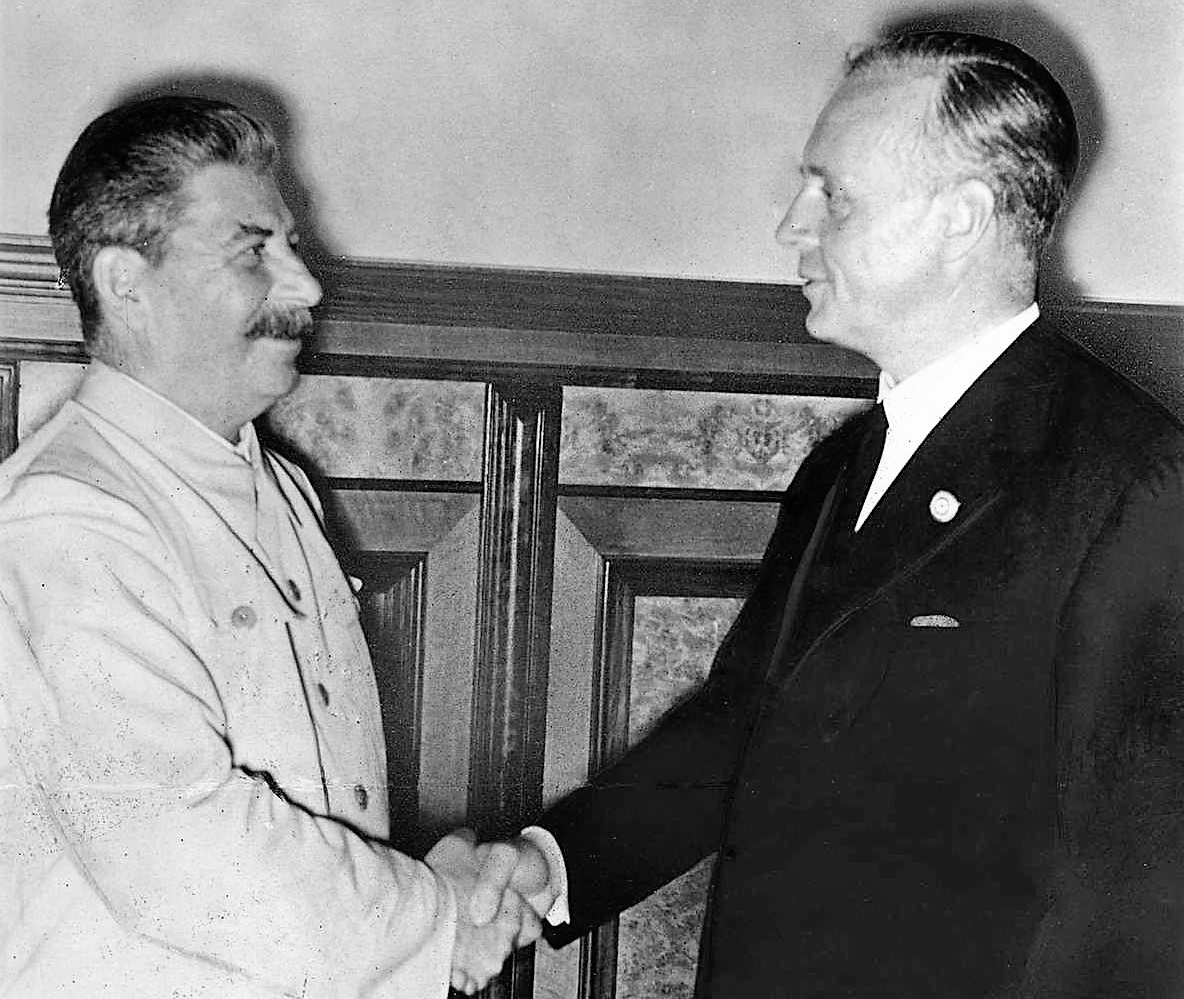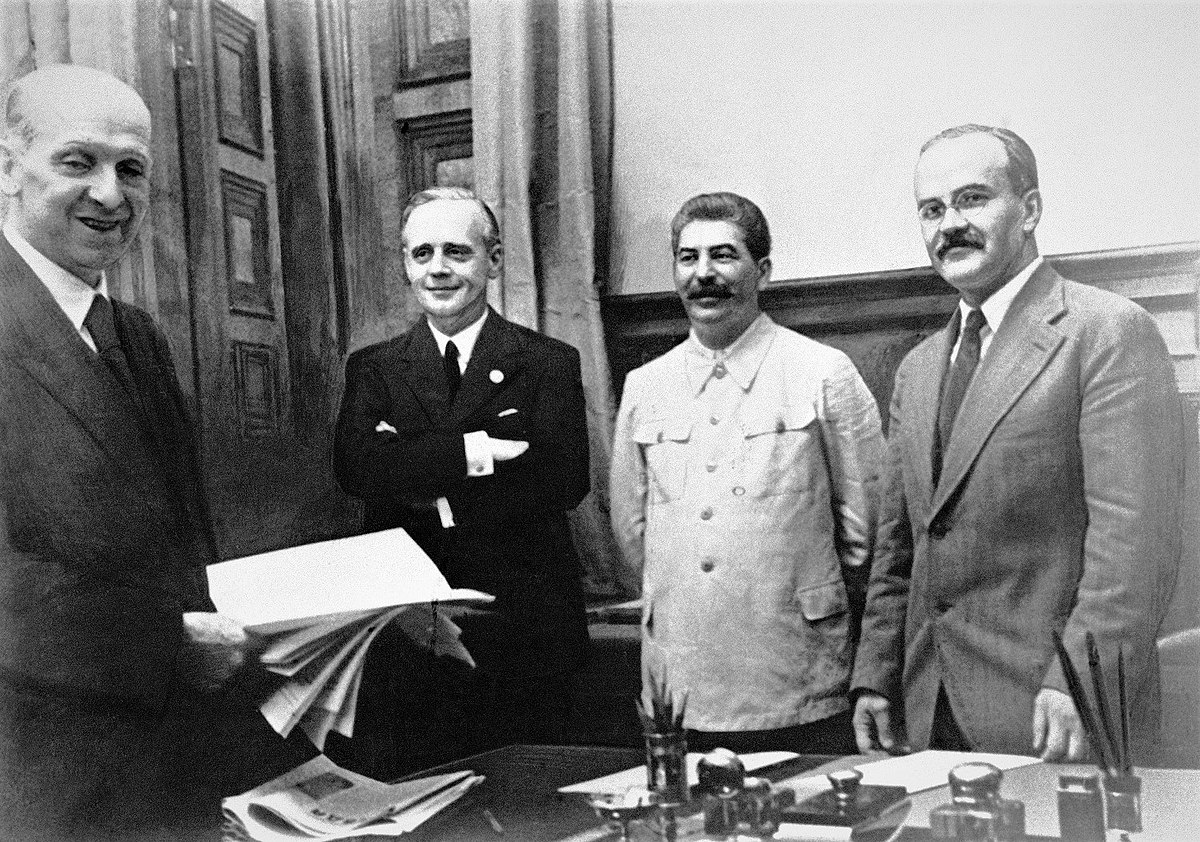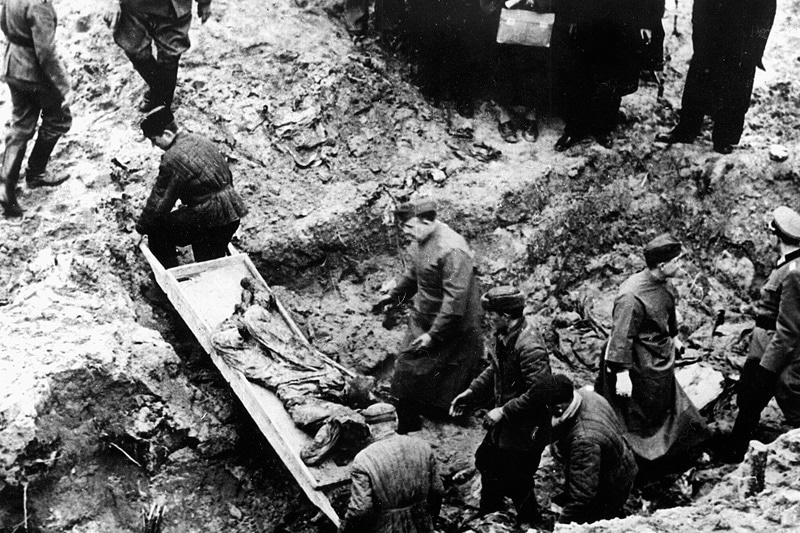The Devils’ Alliance. The evil coalition of Hitler and Stalin against Poland

The Ribbentrop-Molotov Pact paved the way for the outbreak of World War II. The tactical alliance of previously mortal enemies developed into a close coalition. However, in order for this to happen, Poland, who stood in their way, had to be destroyed.
After the Anschluss of Austria, the situation in Europe began to resemble a rollercoaster. Stalin expected that an armed conflict would arise sooner or later but had no intention of allowing himself to be drawn into a war in defense of the Western Allies. Hitler was ready to move away from the previously implacable anti-Bolshevism. The key issue was how to play the Polish authorities, who were trying to maintain an equal distance to their neighbors. Two international crooks had to come to an agreement on this issue, even if they were to leap at each other’s throats soon after. Pilots of the Condor Legion were still bombing Soviet advisers and Moscow-supplied equipment in Spain when Stalin and Hitler began to plan their alliance.
On March 10th, 1939, Stalin made his famous “chestnut speech” assuring that the USSR was ready to make a deal with any state, regardless of its political system. He contrasted the Third Reich to Western democracies, which he accused of inciting war with Germany. Marshal Voroshilov presented forecasts which showed that France and Great Britain would not be able to meet Germany’s force.
Devils’ Alliance
The calculation became simple and the road to an alliance open. It was only necessary to replace the opponents of the cooperation in key positions – in the post of People’s Commissar for Foreign Affairs, the Jewish Litvinov was replaced by Molotov. Immediately afterwards, work on the pact started in full swing, albeit in secret. Stalin broke off negotiations with Western states only when, in August 1939, Hitler agreed to give him half of Poland, part of Latvia, and Estonia. On August 23rd, Ribbentrop flew to Moscow to sign the treaty.
After the final arrangements, Stalin gave a modest party, at which, instead of champagne, which he was not a fan of, toasted Hitler’s health with a glass of vodka. On the news of signing the pact, he started running around his office, thumping the walls with his fists and exclaiming that he had the world in his pocket. The “Devils’ Alliance” had entered into force. The fate of Poland was sealed.

Public execution of Polish priests and civilians in Bydgoszcz’s Old Market Square on 9 September 1939 (Source: Public Domain)
The pact consisted of just seven articles which, when made public, caused global consternation. However, the real ticking time bomb was the secret supplementary protocol, regulating the “spheres of influence” from the Baltic to the Black Sea, de facto establishing the limits of looting in the event of war.
Blows from both sides
Immediately after the German aggression against Poland, a group of Soviet officers headed by General Maksim Purkayev came to Berlin. Direct communication was established between the Wehrmacht and the Red Army.
Four hours after the attack, the Germans turned to the Soviets for military assistance. The need became even more pressing after the Western Allies declared war on Germany. Hitler hoped that the Red Army would relieve the weight from Wehrmacht’s soldiers, and that part of his forces could be transferred to the west. Stalin, however, stalled. Units were mobilized near the border with Poland and large maneuvers were launched as part of the aggression plan. Lavrentiy Beria set up special operational groups with the NKVD, which were to enter Poland first. On September 9th, Molotov informed the German ambassador that the Soviets would move in a few days. Five days later, the Polish government finally collapsed. Stalin did not solely wait for the outcome of the Wehrmacht campaign in Poland. The decision to march in was made after receiving intelligence about the results of the conference of the Western Allies in Abbeville on September 12th. France and Great Britain decided there that they would not come to Poland with armed help.
Finally, on the night of September 17th, Stalin, Molotov, and Voroshilov informed the German ambassador Schulenburg that the Soviets would be entering Poland within hours. The latter still had time to amend the Soviet note informing about the intervention, which the Deputy People’s Commissar for Foreign Affairs Potemkin tried to hand over to the Polish ambassador at around 2 a.m.
An hour later, Poland’s eastern border was crossed by 8 Soviet armies, totaling over 600,000 soldiers, 4,733 tanks, and 3,298 airplanes. Poland, attacked by two neighbors of immense power, did not stand a chance. After September 17th, the surprisingly strong morale of the Polish army began to collapse. They previously loyal conscripts of Belarusian and Ukrainian origin began to desert en masse. Upon the news of the Soviets entering and leaving the country by the Commander-in-Chief, the commanders disbanded their troops, seeing no chances for any further resistance. The campaign against Poland ended with the German-Soviet parade in Brest, Belarus on September 22nd. The marching units from the honorary tribune were greeted by Generals Heinz Guderian and Semyon Krivoshein.
The defeat of Poland by no means ended the cooperation. Less than a week later, the “German-Soviet Friendship and Border Alliance” was signed. In secret protocols, Lithuania was handed over to the USSR in exchange for the Lublin region. Under pressure from Stalin, Hitler resigned from the appointment of the Polish rump state. The two powers agreed to cooperate in their efforts in the fight against “Polish propaganda” on both sides of the new border. In an interview with “Pravda”, Ribbentrop stated that the Soviet-German friendship was now finally solidified and that the parties would not allow third countries to interfere in Eastern European affairs.
On the basis of a trade agreement concluded in August, a vast amount of raw materials was shipped into Germany from the USSR. Deliveries including, among others, copper, lead, nickel, grain, and legumes amounted to 650 million German marks. Perhaps the most important raw material, however, was oil, without which the German war machine would stand still. The German diplomat Karl Schnurre, who negotiated the trade agreement, called it “a wide open door to the east”.
The Germans, on the other hand, were slow to fulfill their rather modest obligations. Until the beginning of 1941, they sold to the Russians, among others, the unfinished Lützow cruiser, 23 airplanes, two 210 mm mortars and one PzKpfw III tank. Hitler personally banned the transfer of modern weapons and his military plans.

The two regimes also collaborated in other fields. From the very beginning of the war with Poland, the Soviet radio station in Minsk broadcasted signals to facilitate the orientation of German planes. Hitler’s submarines began to use the secret “Nord” base of the Soviets near Murmansk, and many German ships and vessels also took refuge in this port. In August 1940, Soviet icebreakers carried out the German “Komet” raider through the Northern Passage, enabling it to carry out successful operations in the Pacific. Protected from the east, Hitler kept only a few divisions on the border with the USSR during the German invasion of France. Stalin even handed over to the authorities of the Third Reich 150 German communists who fled to the USSR in order to take refuge from Nazi persecution.
In December 1939 and March 1940, the German and Soviet authorities jointly conducted a dispatch operation in Kraków and Zakopane, mainly concerning the resettlement of people and the exchange of prisoners of war. The NKVD and Gestapo officers met with each other several times. Their goal was most likely to coordinate the extermination of the Polish population, especially the elite and intelligentsia, as well as to fight the resistance movement on both sides of the border. The minutes of these meetings have not been declassified by the Russians to this today.
Individual interventions also took place. In this way, at the request of Potemkin, the daughter of Wanda Wasilewska and the furniture from her Warsaw apartment were transferred to USSR-occupied Lviv.
And every bandit has a knife behind his back
The alliance of the Third Reich with the USSR was treated by both sides as tactical, calculated to secure immediate interests resulting from the international situation. It was only a matter of time before the allies would be at each other’s throats. The pretext for loosening relations was the inability to agree on the distribution of new territorial acquisitions. As early as October 14th, 1940, Stalin approved the plan to attack Germany. Hitler signed Directive No.21 concerning the planning of an attack on the USSR on December 18th, 1940. From April 1941, the diplomatic world was already living the expected German-Soviet war.
Despite this, economic cooperation was in full swing. The last deliveries of Soviet raw materials arrived several dozen minutes before the war broke out. One of the reasons for such a close alliance of the two enemies was the matter of Poland. This was confirmed by Stalin himself when, in June 1945, he stated the famous words: “The conquest of Poland is more important than the defeat of Germany”. His best ally – Adolf Hitler – if he were alive, he would probably have agreed with him.
Grzegorz Janiszewski
This article was published in 2021 in Do Rzeczy magazine.



